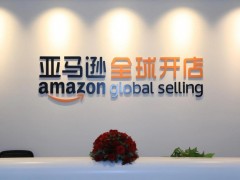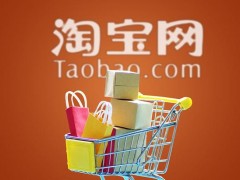How does JD.com operate?
1、京东自营
京东自营是一种采销模式,适合传统线下商家。商家提供货品就行,并且把货发到京东全国七大仓库(沈阳、北京、西安、上海、武汉、成都、广州),货品最终卖什么价,要参加什么活动,基本都是京东说了算,商家没有运营权。此种模式下,要想做的好,基本只能依靠京东采销经理的支持。
2 、POP模式
POP平台下共分为四大模式——FBP/LBP/SOPL/SOP。
(1)FBP模式
FBP京东给商家一个独立操作的后台, 但是从仓储到配送到客服都是京东来操作,京东本身自营的产品所有能享受的服务,商家都能享受。(要求先备货到京东仓储)商家必须要给京东开具增值税发票-京东给消费者开具发票 。
(2)LBP模式
FBP京东给商家一个独立操作的后台, 但是从仓储到配送到客服都是京东来操作,京东本身自营的产品所有能享受的服务,商家都能享受。(要求先备货到京东仓储)商家必须要给京东开具增值税发票-京东给消费者开具发票 。
(2)LBP模式
商家也拥有非常大的经营权。它和SOP模式的最大区别是物流和发票。LBP京东给商家一个独立操作的后台, 配送和客服交给京东操作, 要求每天有订单,将产生的订单包装好发货到京东就近的仓储,由京东来开具给消费者的发票。LBP模式下,结款的时候必须给京东开增值税发票,增值税发票是17%,这个成本也很高。不用给客户开发票,京东会给客户开。LBP模式最大的好处是可以做货到付款,所以转化率高,运营的时候可以购买京东首页硬广,也方便参加京东团购。LBP模式,适合客单价高,想做大的商家,最大缺点是成本高。
3)SOP模式
这个模式,目前是入驻京东的主流模式,特别适合中小卖家。这个模式下的运营成本是最小的,主要是扣点和推广费用。SOP京东给商家一个独立操作的后台,跟淘宝商城模式比较类似, 由商家来承担所有的服务。
(4)SOPL模式
SOPL 京东给商家一个独立操作的后台,配送和客服交给京东操作, 要求每天有订单,将产生的订单包装好发货到京东就近的仓储,由商家来开具给消费者的发票。SOPL模式,物流和LBP模式一模一样,差别是结款是不用给京东开增值税发票。但是,如果客户有要求,必须给客户开发票。SOPL模式,要比LBP模式成本低。缺点是会给商家开发票的人增加工作量。
3、京 喜
京喜拼购店是指只做拼购业务形态的京东第三方店铺;隶属于京喜平台。 拼购店及拼购企业店享有0.6%超低扣点,享受拼购项目的亿级社交流量赋能,千万级CPS站外推广资源、30余种营销玩法工具赋能、专属运营对接、专属栏目育新和专属资源激励的权益。
Professional answer
1. JD.com self-operation
JD.com self-operation is a procurement and sales model suitable for traditional offline merchants. Merchants only need to provide goods and send the goods to JD.com's seven warehouses across the country (Shenyang, Beijing, Xi'an, Shanghai, Wuhan, Chengdu, and Guangzhou). JD.com has the final say on the final price of the goods and what activities to participate in. Merchants do not have the right to operate. Under this model, if you want to do well, you can only rely on the support of JD.com's procurement and sales manager.
2. POP model
The POP platform is divided into four major models: FBP/LBP/SOPL/SOP.
(1) FBP model
FBP JD.com provides merchants with an independent operating background, but JD.com operates everything from warehousing to distribution to customer service. Merchants can enjoy all the services that JD.com's self-operated products can enjoy. (Requires that the goods be prepared in JD.com's warehouse first) Merchants must issue VAT invoices to JD.com - JD.com issues invoices to consumers.
(2) LBP model
FBP JD.com provides merchants with an independent backend, but JD.com operates everything from warehousing to delivery to customer service. Merchants can enjoy all the services that JD.com's own products can enjoy. (Requires to prepare goods in JD.com warehouse first) Merchants must issue VAT invoices to JD.com - JD.com issues invoices to consumers.
(2) LBP model
Merchants also have a very large right to operate. The biggest difference between it and the SOP model is logistics and invoices. LBP JD.com provides merchants with an independent backend, and delivery and customer service are handed over to JD.com. It is required to have orders every day, and the generated orders will be packaged and shipped to JD.com's nearest warehouse, and JD.com will issue invoices to consumers. Under the LBP model, VAT invoices must be issued to JD.com when settling the payment. The VAT invoice is 17%, which is also very costly. There is no need to issue invoices to customers, JD.com will issue them to customers. The biggest advantage of the LBP model is that it can do cash on delivery, so the conversion rate is high. During operation, you can buy hard ads on the JD.com homepage, and it is also convenient to participate in JD.com group purchases. The LBP model is suitable for merchants with high average order value and who want to become big. Its biggest disadvantage is the high cost.
3) SOP model
This model is currently the mainstream model for entering JD.com and is particularly suitable for small and medium-sized sellers. The operating cost under this model is the lowest, mainly the commission and promotion costs. SOP JD.com provides merchants with an independent operating background, which is similar to the Taobao Mall model. Merchants are responsible for all services.
(4) SOPL model
SOPL JD.com provides merchants with an independent operating background. Delivery and customer service are handled by JD.com. It is required to have orders every day, and the generated orders will be packaged and shipped to JD.com's nearest warehouse. Merchants will issue invoices to consumers. In the SOPL model, logistics is exactly the same as the LBP model. The difference is that there is no need to issue a VAT invoice to JD.com for settlement. However, if the customer requires it, an invoice must be issued to the customer. The SOPL model is cheaper than the LBP model. The disadvantage is that it will increase the workload of the merchant's invoice issuer.
3. Jingxi
Jingxi group-buying store refers to a third-party store on JD.com that only does group-buying business; it is affiliated to the Jingxi platform. Group-buying stores and group-buying corporate stores enjoy an ultra-low commission of 0.6%, and enjoy the rights and interests of social traffic empowerment of hundreds of millions of group-buying projects, CPS off-site promotion resources of tens of millions, more than 30 kinds of marketing tools empowerment, exclusive operation docking, exclusive column cultivation and exclusive resource incentives.
Similar Q&A
recommend What is the difference between JD Rising Star Program and New Star Program?
E-c News Continuously pushing e-commerce knowledge to you








Latest Q&A More
-
Do I need a trademark to open a franchise store on Pinduoduo to sell books?
#Pinduoduo#
-
How to withdraw from a Pinduoduo store
#Pinduoduo#
-
How to withdraw from Pinduoduo merchants
#Pinduoduo#
-
How to pay fees when closing a Pinduoduo store
#Pinduoduo#
-
How to withdraw from Pinduoduo
#Pinduoduo#
-
Which store on Pinduoduo is authentic?
#Pinduoduo#
-
Which stores on Pinduoduo can buy genuine products?
#Pinduoduo#
-
How to check the store under Pinduoduo
#Pinduoduo#
-
How to receive Pinduoduo online game products
#Pinduoduo#
-
How to sell the electronic version on Pinduoduo
#Pinduoduo#
E-c News 2025-12-29 07:28:42

- African netizens use China Africa cross-border e-commerce platform for online shopping
- how is the new seller of cross-border e-commerce doing?
- how can cross-border e-commerce Amazon sell on Amazon platform without goods?
- Amazon store opening process and cost analysis!
- Amazon plans to expand its pharmacy business on a large scale and will add same day delivery service
